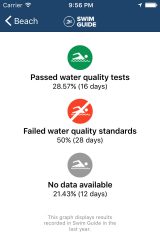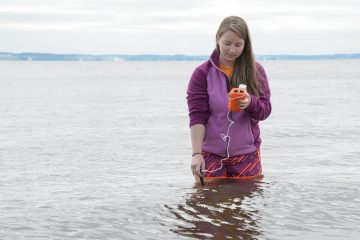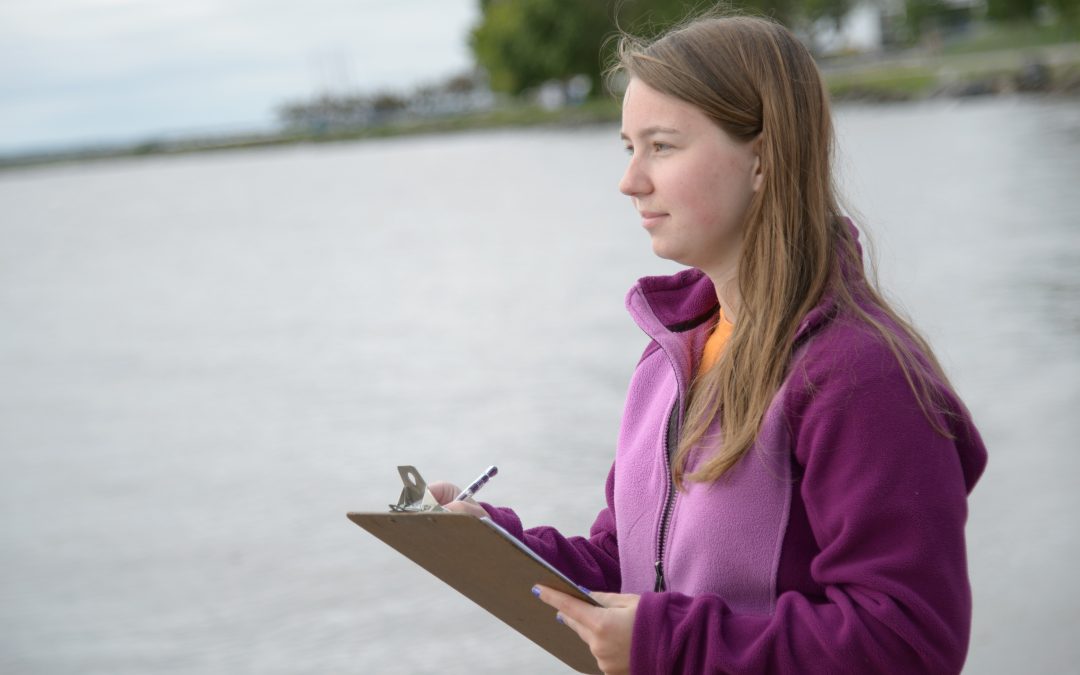It’s no “day at the beach” if you’re left battling stomach cramps. Or swimmer’s itch.
Data collected by University of Wisconsin Oshkosh students is helping citizens know if the beach or boat launch they want to go to is considered safe for swimming.
The UW Oshkosh Environmental Research and Innovation Center (ERIC) lab has joined the Swim Guide affiliate program, making it easy for the general public to have access to the results of its beach monitoring. Swim Guide is an authority on recreational water conditions–available through its website and smartphone app.
“Now that the ERIC lab is an affiliate of Swim Guide, the water data we collect and report to the DNR will be easy for anyone to access through the Swim Guide app,” said Michelle Bogden Muetzel, ERIC program assistant.
“This allows people to get the information in real-time when they need it. The other sites where this data is posted are specific to the county or state, but Swim Guide has a wider reach and audience since they cover the entire U.S. as well as other countries.”
Swim Guide helps people find their area beaches and know, at a glance, which ones are safe for swimming. It delivers free real-time water quality information for more than 7,000 beaches, lakes, rivers and swimming sites in the U.S., Australia, the Bahamas, Canada, Mexico and New Zealand.

Smartphone app
Beach-goers can browse the map or search for a beach by name and descriptions will provide water condition as well as amenities, lifeguard availability, parking and more.
The U.S. Environmental Protection Agency estimates 3.5 million people get sick each year after swimming in natural water bodies containing harmful bacteria and pollution. Risk of illness depends on a number of factors, including age, health of immune system, concentration of contaminants in the water and the amount of contact had with the water.
A popular beach in Two Rivers that was closed this week because of elevated levels of E. coli bacteria has reopened, but two others in Manitowoc County remained closed. Water testing is being done by UW Oshkosh’s ERIC lab.
“My students have done this (monitoring) since 2003,” said Greg Kleinheinz, ERIC lab director. “We monitor over 100 beaches around Wisconsin and are responsible for monitoring, research and public notification. (Over the past 15 years) this includes over 300 students and $10 million in funding.”

All beaches in Door, Kewaunkee, Manitowoc, Winnebago and Vilas counties are monitored by students connected to the UW Oshkosh ERIC lab. Student interns are paid for their work and housing is provided for those working in Vilas and Door counties and, if needed, in Manitowoc/Kewaunee counties.
ERIC program assistant Bogden Muetzel said there are four students supervised by Kleinheinz who work in Door County for recreational water research and testing.
Emily Harrington, an ERIC research scientist, manages a program in Vilas County in northern Wisconsin, where a remote lab is located. About 20 students are hired for study at about 20 beaches. The students are from UW Oshkosh, other UW schools, other accredited universities or from surrounding states of Illinois, Michigan, Minnesota and Iowa.
With the help of a student in each county, Carmen Thiel, ERIC lab manager, coordinates Winnebago County beach sampling at 13 beaches/boat landings, as well as a number of beaches in Kewaunee and Manitowoc counties. Thiel said contamination at several lakeshore beaches this week was likely due to storm water runoff. Thiel was interviewed this week by two Green Bay television news teams, who explained beach closure notices.

At midweek, there were still two Manitowoc beaches closed and four with cautionary advisories for water-quality concerns.
Bogden Muetzel noted in addition to Swim Guide, online beach and water monitoring information for Wisconsin is listed at www.wibeaches.us or for Winnebago County at www.co.winnebago.wi.us/health/units/environmental-health under inland water monitoring.
Learn more:

